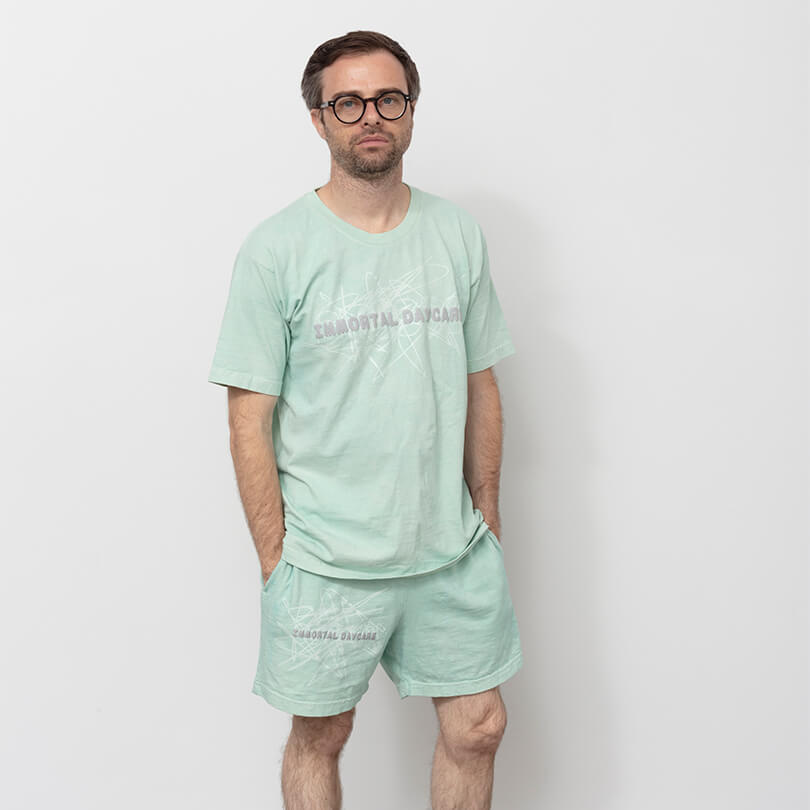Tell us a bit about yourself and what you do.
What I do shifts from day to day. Somedays I am a commercial photographer one day, others I do art documentation. I am the director of The Fulcrum Space and Press. I also teach photography here and there locally in Southern California. As well as, show my own work from time to time. I have a show coming up Leroy’s Happy Place coming up soon that I am working on. When I have free time, I enjoy bodyboarding, hanging out with my nephew Easton. Of course, going to see shows and talking with friends.
Could you talk a bit about your initial efforts when founding The Fulcrum Press back in 2014?
Initially, it was a safety-net for myself. I had been in a collective called Sorry Danny (named after the photographer Danny Lyon) that had just ended and I needed something to work towards and way to keep my momentum. Like most small publishing companies I started with my own work, and the name The Fulcrum Press came from an unbound book about the many starts and stops in my own practice. The first publication titled Fulcrum Points intersected with genres and mediums connected to my personal life through images. That publication became my personal manifesto and became the jumping off point for all the future publications.
At that time I had a series of shows and I felt like I needed a publication for each one to help explain the work. From the previous collaboration, and from Burgin’s Between I could see that there was a way to inform and extend a concept past the duration the show and I wanted that for myself. I liked that at the opening of the show, I could sell publications to people and they could leave with something and the show could be extended beyond time and space. My friends from school really liked my concept and asked to collaborate with me. Early on, I realized how natural it felt to curate work for people and how much I loved to distill work for other people.
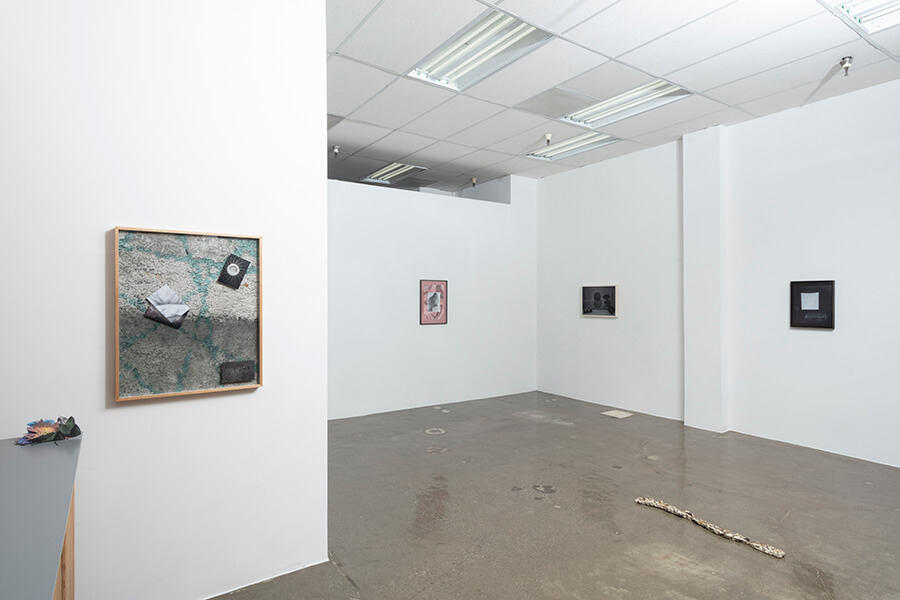
What sparked your interest in photography books and your desire to publish them?
I think because early on I realized the ability for images to be able to defy space, time, language and access and felt a kinship to that. A publication is the most democratic of spaces to me and I’ve grown to feel like it is my safe place. Photography better than any other medium utilizes the publication format, and I am hypnotized and obsessed with looking at them. There is something really exciting to me about constructing a sequence of images that messes with some pre-conceived notion about what we think we know about images and something as simple as a sequence printed on page. I can’t really get over that excitement of turning the page that I first discovered in the aisles of my local book store.
You are currently enrolled in the MFA Program at UC Riverside; how do you bide your time when commuting from East Los Angeles?
You might think I am crazy but one of the reasons I wanted to go to Riverside was for the drive. I often find the drive to the Inland Empire meditative and I use the time to think about my practice. It’s my personal time to be with myself. I love listening and finding new music and I am often inspired by it. I know a lot of friends use the time to listen to audio books, I have tried that but I like to go inside more and be with my thoughts. In undergrad I worked construction throughout school. I would travel back and forth from LA to the IE and in that process I figured out this process. Since graduating I have been searching for that time again. So going back to school out there made a lot of sense for me. I am grateful for those drives, I am going to miss them.
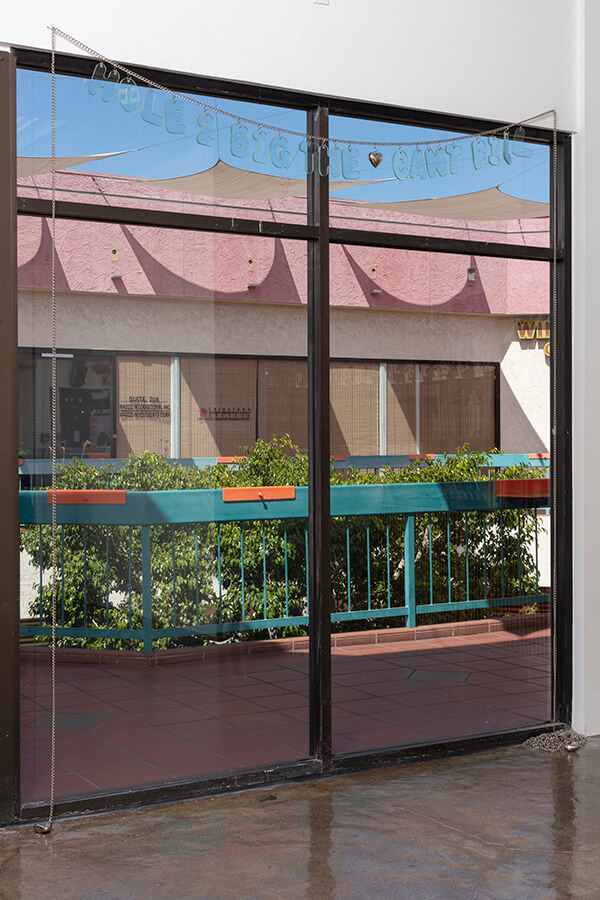
What is the current music rotation in your studio?
King Gizzard & The Lizard Wizard’s Butterfly & Infest the Rats’ Nest, Tyler the Creator’s CALL ME IF YOU GET LOST, Skinshape’s Arrogance is the Death of Men, Refused’s Songs to Fan the Flames of Discontent, Twin Peak’s Side A – EP, LA Priest GENE, Squid Bright Green Field, Gang of Four’s Entertainment (2021 Remastered), Action Bronson’s Only For Dolphins, Mild Orange’s Foreplay, Oscar Jerome’s Breath Deep, James Supercave’s M.O.W.O. – EP (very excited for their forthcoming album) Mogwai’s Hardcore Will Never Die But You Will.
How do you approach balancing your own art practice while maintaining Fulcrum’s exhibition space and publishing?
It all feels really natural to me. From the outside I think doing as many things as I do it can seem like a lot, but it is the balance that I need. The Fulcrum is truly my child and I am so grateful for it. I often walk into the space and my stress lifts and I breath deeper. The space and the press is so enjoyable, and because I am freelance, I have the ability to make my schedule however I want. I believe balance is a never ending pursuit and I often fall off every now and again but as I take on more and more, I find myself able to manage more and more and it keeps me out of trouble and focused with a routine that feeds the rest of practice.
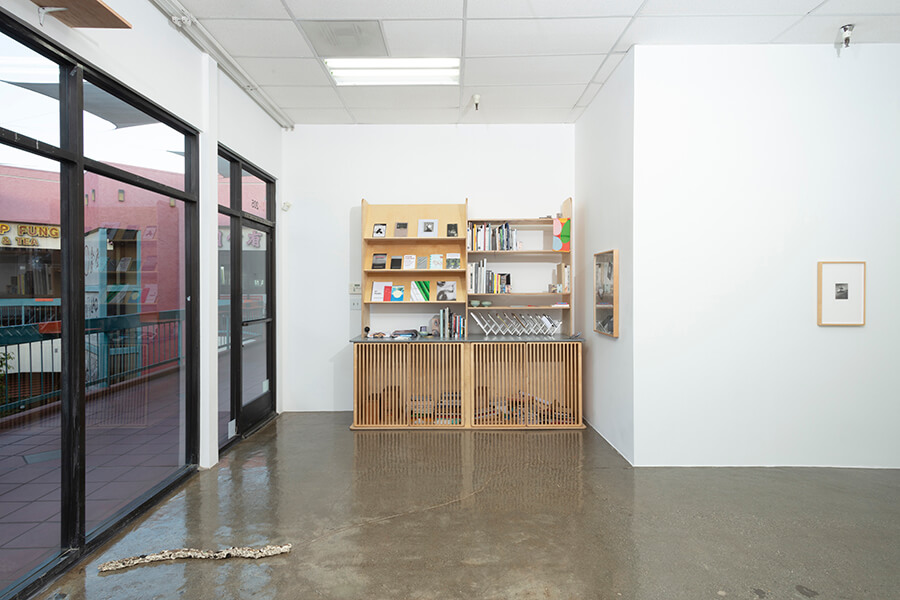
Could you talk about the bookshelf at The Fulcrum Press and its use as a display of visiting artists’ recommendations?
The left side of the bookshelf is curated by the artist /artists currently in the space showing. The books that are left over from the previous show move down to the bottom shelf. Then move to the right side of the shelf. So the bookshelf has become, in a very short amount of time, an index of the publishers who have supported us, and the artist that have passed through the space. Which feels really nice to see a concept that we cooked up having life and independence.

You grew up in Southern California, how has the time you have spent in Los Angeles affected The Fulcrum Press?
Oh my goodness, it has affected me tremendously. I always wanted to leave Murrieta when I was younger. Even though LA is an hour and half away it felt like another state. I met a lot of like-minded people which really expanded my mind and made me feel like I had a tribe of my own. I can’t speak to what it is like in other cities to much, but I can honestly say that I think exploring other mediums and going to various pockets of spaces throughout the city to see shows in artist-run-spaces has been incredibly important to how I see the city but also the type of images I enjoy looking and type of work I thinking about now.
Could you talk a bit about Ellen Schafer’s current exhibition Simplicity, and The Fulcrum’s conjunction with “New Low”?
The current two-part show by Ellen Schafer loosely toys with the framing of art space as daycare. The exhibition playfully addresses the systems we are socialized into, namely how we exchange and play in relation to one another. Here, daycare functions as a way of deconstructing the spaces that art lives through and the cast of characters that make up its world. Both iterations of the show self consciously nod towards the individual practices of the artists as gallerists. The images produced for the show at The Fulcrum, comprise of photographs of backdrops used in school portraits, only the student as subject is removed. This as a gesture folds back into a larger conversation within the exhibition and also nods towards my professional work as a studio photographer, including its infiltration back into my work as an artist.
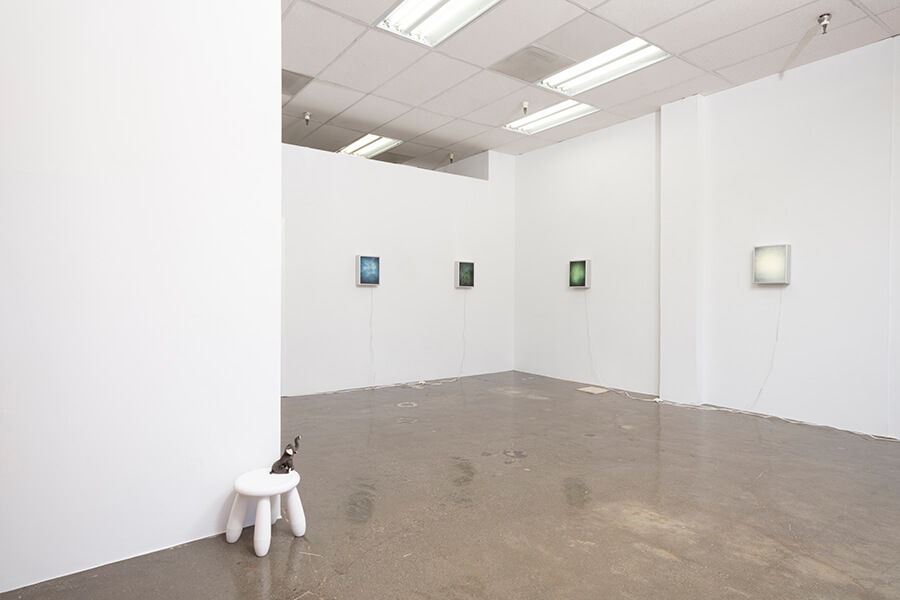
What has been your most memorable experience while tabling at art book events?
Gosh, so many, that is a tough one. We started out by Ewa giving us a one foot by one foot space on her table and just being there at the first LAABF for us was huge. Even if we kind of snuck in on the punk table it was life changing moment. Having people and artist take us seriously, getting honest reactions to books, it was all incredibly valuable formative. I think the best part of the fairs has been making friends with other publishers and the support network that comes with the community. I feel like everyone there is routing each other on. Even though we do really strange publications, and at times are really complicated, it is nice to excepted by the community ever since that first year of the LAABF. I really miss seeing everyone to be honest and I can’t wait till I can stand behind my books again and table.
Interview composed by Sam Dybeck.
